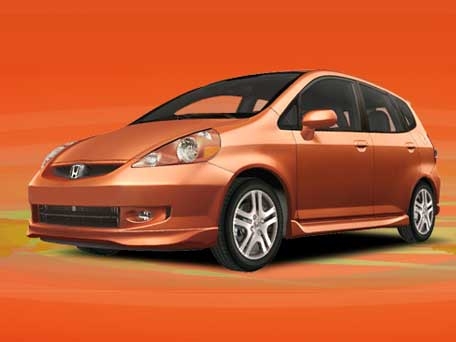Impressively big smallness. That's how Honda describes its new Honda Fit model, a "bite-sized wonder" the company is pushing to a U.S. car market suddenly hungry for fuel efficiency. The Fit is indeed a snazzy car, and features a customizable back seat that allows owners to alter the vehicle's interior configuration on a whim. The most interesting aspect of the Fit, however, may be its nationality. Despite the Honda nametag, the Fit is half-Chinese. It is the product of a joint venture between Honda and China's state-owned DongFeng Motors, and is also being marketed in Europe as the Honda Jazz. The model is one of the first Chinese automobiles Americans and Europeans will see on their highways -- but many more are on the way. Like the Fit, China's auto industry is impressively big for not being particularly large. According to 2006 data from the International Organization of Motor Vehicle Manufacturers (OICA), China produces just shy of 6 million vehicles per year (including cars and commercial vehicles). The Chinese Automotive Industry Yearbook, a compendium of industry statistics, puts that number higher, at around 7 million, and predicts it will increase to 8 million in 2007. In a global context, this is a modest sum -- OICA says over 66 million vehicles are produced worldwide each year. But consistent growth rates and a blossoming export market, particularly in the sphere of auto parts, signal a grander role for Chinese automakers in the near future. For some established western automakers, the question is becoming not how to beat this emerging behemoth, but how to join it. DaimlerChrysler's recent push to restructure and possibly divest its American operations highlights the difficulties American and European car companies have had with bloated product lines and sky-high personnel costs. Meanwhile, more streamlined Chinese operations are flourishing. Though the vast majority of China's auto production goes into domestic sales -- the country's domestic market is massive, already the world's second largest and rapidly expanding -- exports are growing even faster. They doubled in 2006, coming to around 340,000 units. They are expected to double again in 2007. The majority of these exported vehicles target developing economies in the Middle East, Latin America, and Russia. But now Chinese manufacturers are attempting to make the leap to more developed markets, which often require higher quality and safety standards.
China’s Auto Boom Doesn’t Necessarily Mean Doom for U.S. Industry

